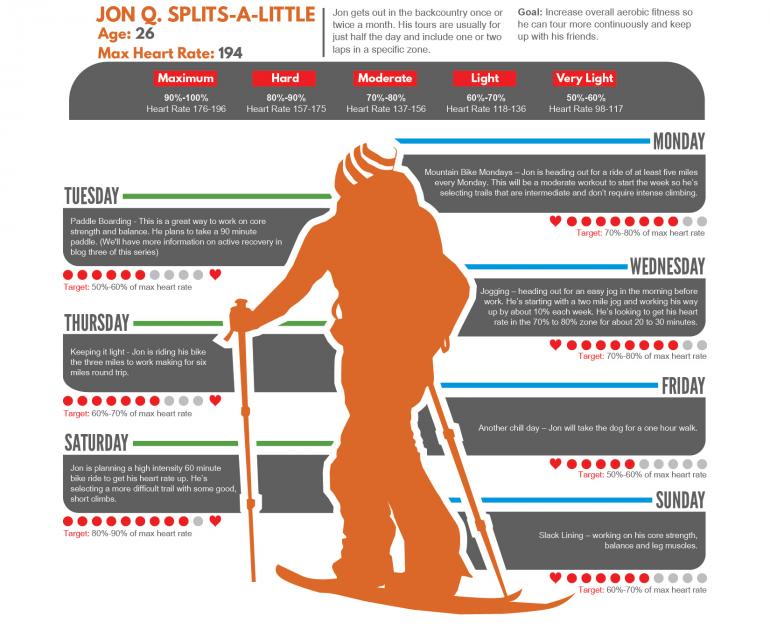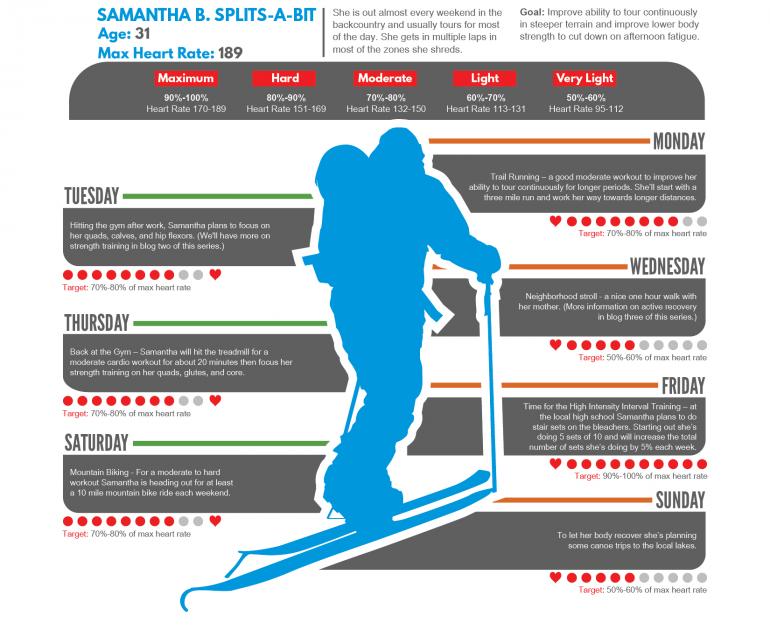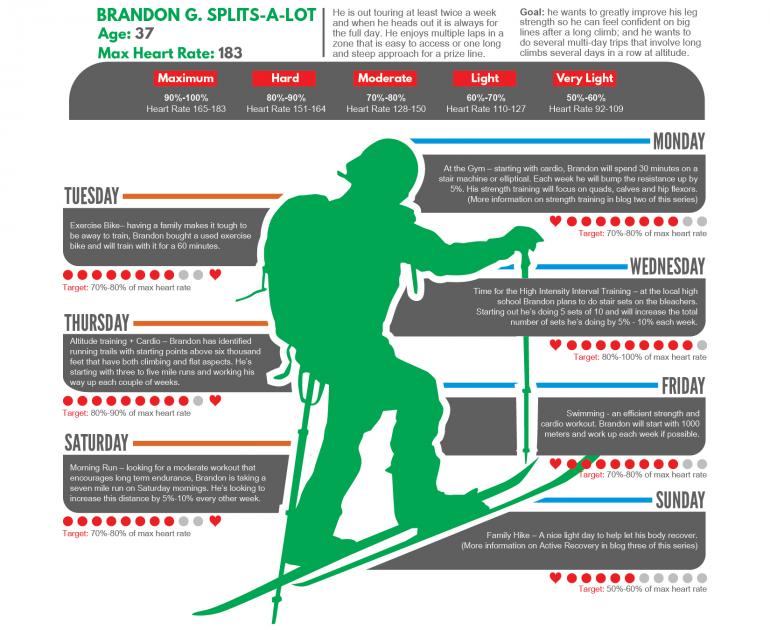Fitness for Splitness
Aerobic training for splitboarders.
Did you find that your fitness level held back your splitboarding last season? Maybe another lap or two sounded fun, but your body was telling you that your day was over? If so, you’re not alone—splitboard touring and riding is hard work.
If you want to make more laps and get more vert this winter, you should start preparing your body now—Spark R&D's Split Fitness offseason training series is here to help guide you. The series includes: building an aerobic base, increasing muscular endurance, and improving lower-limb stability and balance through active recovery. In this blog we take a look at Aerobic Training.
Develop a Training Program that Works for You
Developing a base of cardiovascular fitness should be the primary focus of your offseason training. Splitboard touring is an aerobically demanding activity, and long ascents require a high level of fitness. Having a strong aerobic foundation will allow you to climb faster, farther, and complete more laps on the days when the snow is fresh and deep.
An important tool that can be used to monitor your progress within and between sessions is your heart rate. If you plan to use heart rate, begin by using the following simple formula: Max Heart Rate = 220 – (your age). Monitoring your heart rate will allow you to be more efficient in your training, and to make the most of your time. While some people prefer to train with heart rate monitors, you can easily calculate your heart rate by taking your pulse for 10 seconds and multiplying the beats you count by six. There are also sweet apps for iOS and Android devices that turn your phone into an actual heart rate monitor – two popular apps are Instant Heart Rate and Runtastic Heart Rate Pro.
In preparation for the splitboard season, your offseason aerobic training sessions should be long duration and light (60%-70% max heart rate) to moderate (70%-80% max heart rate) intensity. While planning your training, avoid increasing duration by more than 5-10% each week to avoid common overuse injuries like sprains or strained muscles. Quality is more important than quantity at this point, so if you are struggling to complete a workout, just repeat that workout the next week to give your body time to adapt instead of increasing the duration or mileage.
High-Intensity Interval Training
You can also complement your aerobic training by completing one high-intensity training session per week (80-100% max. heart rate). High Intensity Interval Training (also known as HIIT) combines short bursts of high-intensity activity with varied intervals of low to moderate intensity exercise. The advantages of HIIT include improved aerobic and anaerobic fitness, blood pressure, cardiovascular health, insulin sensitivity, cholesterol profiles, and reduced abdominal fat and body weight while maintaining muscle mass. HIIT training can be completed over a short period of time, and can be accomplished in many different settings such as sprinting, running stair sets, bike sprints, and even resistance training.
Your Plan
We know that’s a lot of information. So, how do you apply that information to make a schedule that works for you and helps you accomplish your goals? Using the guidance in the paragraphs above we created three offseason training schedules for three different splitboarders that have separate styles and fitness levels (see infographics above). Look for similarities between their goals and schedules and your own to help you create an offseason training plan.
Building up an aerobic base now will pay big dividends this winter on the skin track because of the improved cardiovascular and respiratory capacity, and the metabolic adaptations in your muscle, blood cells, and other systems. However, aerobic training is not the entire battle. If your muscles are exhausted at the top of your climb, your physical and mental performance will both be affected. In our next blog we’ll look at what muscles you should focus on training to improve your splitboarding, and how to incorporate strength training into your schedule.
Bonus challenge: depending on your activity of choice, consider adding weight (such as a weighted vest or backpack) to replicate the gear you carry in the winter. A weighted vest should be 5-10% of your body weight for running-based activities.
Ideas for Aerobic Training:
Trail running – improve stability and coordination by running on uneven surfaces.
Mountain biking – improve stability and coordination by biking on uneven surfaces. Mountain biking is aerobically demanding, but can be more difficult to maintain a low-moderate intensity.
Road biking – tight control over steepness, length, duration and can easily monitor and control heart rate.
Rowing – low-impact, full-body engagement.
Swimming – low-impact day aerobic training that also incorporates your upper body, but can be more challenging to monitor heart rate.
Running stairs or hills sets – a good training exercise for your one high-intensity day per week.
SplitboardicTrack – The SplitbordicTrack is an excellent training machine and fully Spark R&D–approved.
This article originally appeared on sparkrandd.com. Celine Valentin is a graduate student at Montana State University completing a master’s degree in exercise physiology and nutrition. She is the official Spark R&D fitness consultant.
References
Baechle, T. R., Earle, R. W. (2008). Essentials of Strength Training and Conditioning, 3rd edition. Champaign, IL: Human Kinetics
Kenney, W. L., Wilmore, J. H., Costill, D. L. (2012). Physiology of Sport and Exercise, 5th edition. Champaign, IL: Human Kinetics
Rantalainen, T., Ruotsalainen, I., & Virmavirta, M. (2012). Effect of weighted vest suit worn during daily activities on running speed, jumping power, and agility in young men. Journal of Strength and Conditioning Research / National Strength & Conditioning Association,26(11), 3030–3035. http://doi.org/10.1519/JSC.0b013e318245c4c6














